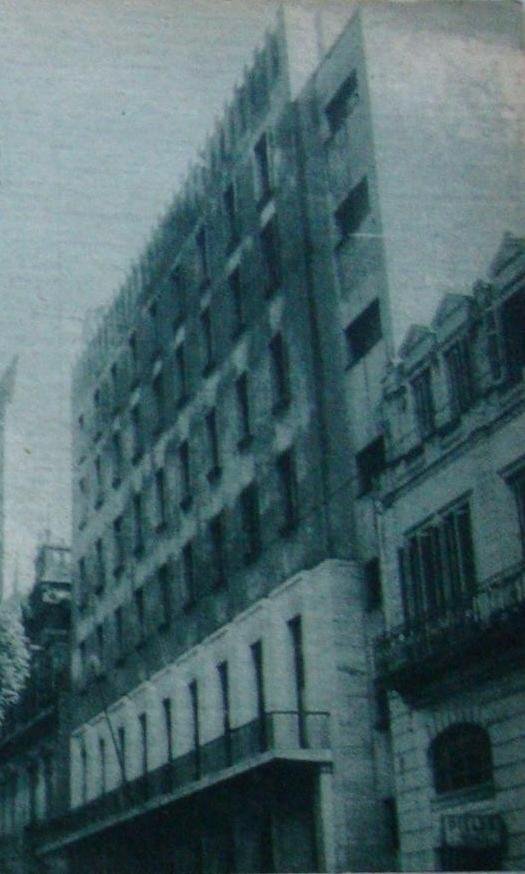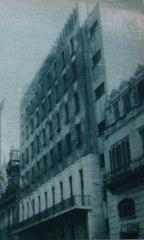
Visiting the Coliseum Theatre (Teatro Coliseo) Buenos Aires: Guide to Tickets, Hours, History & Visitor Tips
Date: 14/06/2025
Introduction
Nestled in the cultural heart of Buenos Aires, the Coliseum Theatre—known locally as Teatro Coliseo—stands as a symbol of Argentina’s rich artistic heritage and architectural grandeur. Since its opening in 1905, this iconic venue has played a pivotal role in the city’s cultural evolution, hosting world-class opera, tango, ballet, and symphonic performances. Blending European neoclassical design with local traditions, Teatro Coliseo continues to captivate audiences and visitors, embodying the spirit of the “Paris of South America.”
This comprehensive guide covers the theatre’s history, architectural highlights, cultural milestones, visiting hours, ticketing information, accessibility, travel tips, and nearby attractions—equipping you with everything needed for a memorable visit. For official updates, see the Teatro Coliseo Buenos Aires website and Buenos Aires Tourism.
Table of Contents
- Introduction
- Origins and Historical Development
- Architectural Highlights
- Cultural Significance & Milestones
- Modern Era: Restoration and Programming
- Visitor Information
- Nearby Attractions
- FAQs
- Conclusion
- References
Origins and Historical Development
The Teatro Coliseo was first inaugurated in 1905 in Buenos Aires’ prestigious Retiro neighborhood, a district known for its grand architecture and vibrant arts scene. Originally conceived by British performer Frank Brown as a circus hall, the theatre quickly became a nexus for diverse artistic expressions, bridging European traditions and local culture.
Its early years were marked by a transition from popular entertainment to high art, setting the stage for Teatro Coliseo’s emergence as a preeminent venue for opera, orchestral concerts, and the performing arts.
Architectural Highlights
The current neoclassical building, designed by architect José Grandi and opened in 1918, is renowned for its golden frescoes, eight-meter-high ceilings, and five ornate balconies accommodating 1,900 spectators. The design reflects the European influences that shaped Buenos Aires in the early 20th century, earning the theatre a reputation as the “crown jewel” of Argentinian theatre architecture.
Visitors are struck by the theatre’s Italianate façade on Avenida Corrientes, the majestic foyer, and the sumptuous interior, all restored to brilliance through periodic renovations that preserve both historical authenticity and modern comfort.
Cultural Significance & Milestones
Artistic Innovation and National Identity
From its earliest days, Teatro Coliseo helped shape Argentina’s performing arts landscape. It hosted some of the country’s first public tango performances—cementing its place in national identity—and premiered major works in opera, ballet, and symphonic music.
A landmark moment occurred on August 27, 1920, when Enrique Telémaco Susini and his team conducted one of the world’s first radio broadcasts from the theatre’s terrace, marking the birth of LOR Radio Argentina and propelling Buenos Aires into the global spotlight as a center of technological and artistic innovation.
Notable Artists and Premieres
Legends such as Carlos Gardel and María Guerrero have graced its stage, with the theatre hosting both local talent and international stars. The annual National Competition for Children’s Tango and a diverse calendar of concerts, ballets, and theatrical productions underscore its ongoing commitment to cultural excellence.
Modern Era: Restoration and Programming
After periods of turbulence—including closure and partial demolition in the 1930s—the theatre was revitalized in 1961 and again in 2018, with major restorations ensuring structural integrity, state-of-the-art facilities, and accessibility for all visitors.
Today, Teatro Coliseo is a vibrant hub for classical music, contemporary performances, international acts, and community events. It houses the Italian Consulate and Institute of Culture, symbolizing its ongoing bridge between Argentine and European traditions.
Visitor Information
Visiting Hours
- General Hours: Monday to Saturday, 10:00 AM–6:00 PM (extended during events)
- Box Office: Tuesday to Saturday, 12:00–8:00 PM
- Tip: Always check the official website or contact the box office for up-to-date schedules, especially around holidays and festivals.
Tickets
- Purchasing: Available online via the official Teatro Coliseo website and authorized vendors.
- Prices: Vary by event; generally ARS 500–3,000 for regular performances, with premium concerts ranging higher.
- Advance Booking: Strongly recommended for popular shows and VIP seating.
Accessibility
- Facilities: Wheelchair access, ramps, elevators, accessible restrooms, and designated seating.
- Assistance: Contact the theatre in advance for special needs ([email protected] or +54 11 4814 3056).
- Guide Dogs: Welcome.
Guided Tours & Special Events
- Tours: Spanish and English guided tours reveal the theatre’s history, architecture, and backstage secrets. Advance booking is required.
- Events: The schedule includes ballet, tango, classical, contemporary, and international acts. Special experiences like backstage tours and meet-and-greets are occasionally available.
Travel Tips
- Getting There:
- Subte: Tribunales station (Line D) is closest.
- Bus/Taxis: Well-served by central lines.
- Walking: Convenient from downtown hotels and landmarks.
- Parking: Limited—public transport is preferable.
- Best Times: Weekday mornings or early afternoons for tours; evenings for performances.
- Dress Code: Smart casual is recommended; formal attire for gala nights.
Photographic Spots
- The neoclassical façade at Avenida Corrientes and Tucumán.
- The grand interior, golden frescoes, and balconies.
- The panoramic terrace views overlooking downtown Buenos Aires.
Nearby Attractions
Theatre-goers can enrich their visit by exploring:
- Avenida Corrientes: Lined with bookstores, cafés, and famed pizzerias.
- Teatro Colón: One of the world’s leading opera houses (Teatro Colón Guide).
- Plaza San Martín: A historic park for a pre-show stroll.
- Recoleta & Retiro: Museums, art galleries, and the iconic Recoleta Cemetery.
- Café Tortoni: Historic café for post-show relaxation (The Collector).
Frequently Asked Questions (FAQ)
Q: What are the box office hours and visiting times?
A: Box office: Tuesday–Saturday, 12:00–8:00 PM. Theatre open Monday–Saturday, 10:00 AM–6:00 PM. Times may vary—check the official website.
Q: How do I buy tickets?
A: Purchase online at Teatro Coliseo website or in person at the box office. Early purchase is advised for popular events.
Q: Is the theatre accessible?
A: Yes—wheelchair access, ramps, elevators, and accessible restrooms are available.
Q: Are guided tours offered?
A: Yes, in Spanish and English. Book in advance.
Q: Can I take photos inside?
A: Photography is generally restricted during performances but permitted during tours in designated areas.
Q: Are there discounts?
A: Some events offer discounts for students, seniors, or early bookings. Check the official site for details.
Conclusion
A visit to Teatro Coliseo is an invitation to experience the living history and dynamic present of Argentine performing arts. Its architecture, storied past, and diverse programming make it a must-see for culture lovers and history buffs alike. For an optimal experience, check updated hours, book tickets in advance, and plan time to enjoy nearby Buenos Aires highlights.
Stay informed on events and exclusive offers by following Teatro Coliseo on social media and downloading the Audiala app for personalized recommendations and ticketing convenience.
For more on Buenos Aires’ cultural landmarks, explore our related guides and articles.






























































































































































